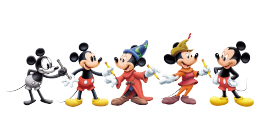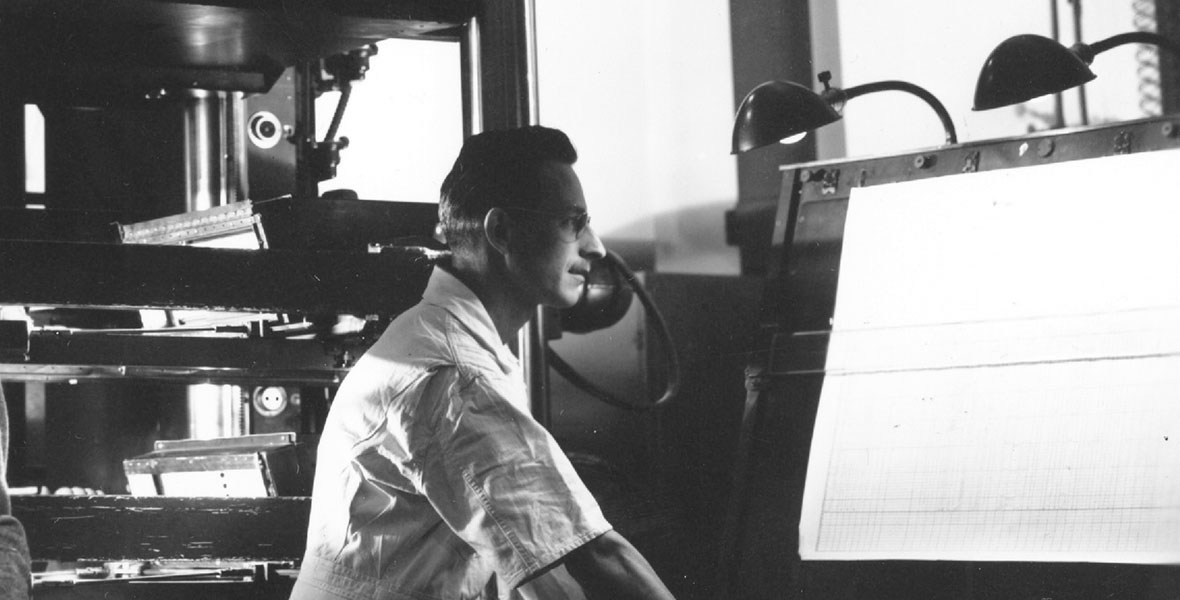Bob Broughton devoted his skill as a camera effects artist to nearly every Disney motion picture from Snow White and the Seven Dwarfs in 1937 to The Black Hole in 1979. He also sprinkled his infectious enthusiasm like pixie dust over fellow cast members and, after retiring in 1982, remained Disney’s greatest cheerleader while coordinating the Studio’s Golden ‘Ears Retirement Club for 15 years.
Bob fondly recalled, “I had one of the best jobs anyone could have, with a one-of-a-kind organization and incredibly talented people.”
Born September 17, 1917, in Berkeley, California, Bob attended the University of California at Los Angeles, studying chemistry, physics, math, and optics. He joined Disney in 1937, delivering mail to Studio offices before stepping into the camera department. There, he shot test camera on Snow White and the Seven Dwarfs, a step in production to check the continuous action of animated scenes before photographing the final product.
Bob quickly graduated to the more technically advanced multiplane camera, photographing artwork painted on glass up to six layers deep and giving depth to animated scenes in such features as Pinocchio.
In 1940, as one of two operators of an advanced camera and crane, Bob transferred to the newly formed special photographic effects department shooting effects for Fantasia These included the transparent flying ghosts featured in the film’s “Night on Bald Mountain” sequence. His technical mind, keen eye, and steady hand soon won him a promotion to camera department supervisor.
While in this new position, Bob branched out into scene planning, developing mechanics for multiplane camera scenes as well as overseeing optical printing on Disney’s first movie to combine live action and animation, Saludos Amigos in 1942.
During World War II, Bob left Disney to serve in the United States Army as a cameraman in the field photographic branch of the Office of Strategic Services, headed by Hollywood director John Ford. Based in Washington, D.C., he photographed an Oscar®-winning film, directed by Ford, documenting the Battle of Midway.
After the War, Bob returned to the Studio as assistant to technical wizard and fellow Legend Ub Iwerks. By the 1950s, he began contributing effects to live-action motion pictures and worked with such celebrities as Julie Andrews, Maureen O’Hara, and Dean Jones. For a time, Bob Broughton even photographed Walt’s lead-ins for the weekly television series Walt Disney’s Wonderful World of Color.
As a talented camera effects artist on both animated and live-action motion pictures, Bob’s job was to create spectacular effects in a subtle way. For instance, in Mary Poppins, he helped Dick Van Dyke dance with animated penguins by using color traveling matte composite cinematography, an award-winning technology that combined live-action and animated actors.
“If it looked like we doctored up a scene,” Bob later recalled, “we were a failure. Our effects weren’t supposed to be obvious.”
Bob Broughton passed away on January 19, 2009, at the age of 91, in Rochester, Minnesota.



